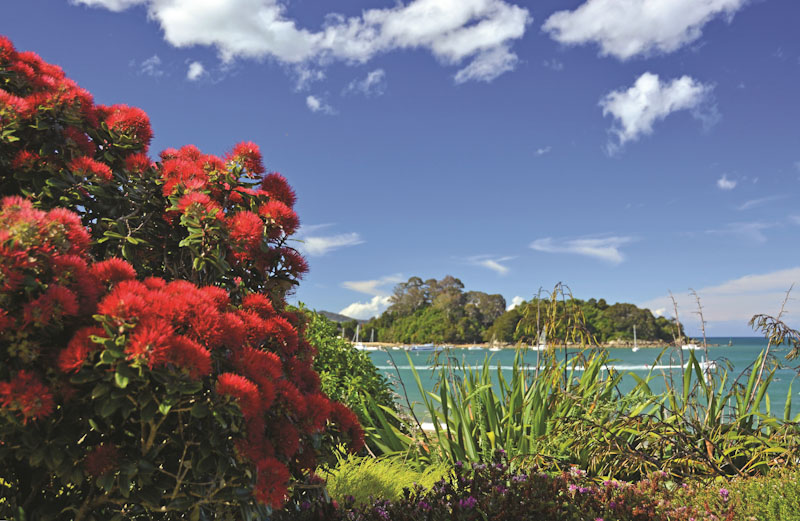Surge funding investment
Four new projects are underway within Ngā Rākau Taketake that address key science priorites identified in the kauri dieback and myrtle rust strategic science plans.
Please note each of these contracts has been assigned a coordinator, but if you have any questions or want to get involved with a project please contact NRTsupport@bioheritage.weavearchive.xyz

Mātauranga Māori Surveillance Framework (MMSF)
The first project will build a mātauranga Māori-based surveillance framework (MMSF) for plant pathogens and is being led by Dr Dean Andreson (Manaaki Whenua – Landcare Research) and Waitangi Wood (Ngatirua, Ngāti Awa, Ngāti Kahu, Ngāpuhi Nui Tonu). While Dean is in Antarctica for the summer Dr Audrey Lustig (Manaaki Whenua – Landcare Research) will be taking over his role.
The aim of the MMSF is to inform future mātauranga Māori and science research investment priorities for surveillance within biosecurity. By employing a trans-disciplinary approach the team want to find solutions that improve surveillance across New Zealand.
They are working on ensuring the MMSF aligns with various systems, including the surveillance system within our biosecurity network, the activities from central and local government agencies, and stakeholders who are part of biosecurity.
It has been essential to establish relationships with those who have been part of the surveillance effort for myrtle rust and kauri dieback. This includes scientists and researchers working with both plant pathogens and hapū/Iwi whose taonga are most affected by the spread of the diseases.
Since October the MMSF team have been working with critical partners and stakeholders for this kaupapa, and held an initial hui with kaitiaki from most regions affected by myrtle rust and/or kauri dieback.
Participants edified that a kaupapa Māori approach that seeks to align research and surveillance information and data, needs to recognise the inter-generational connection that kaitiaki have with their taonga, the environment.
The MMSF team are aware of the many opportunities for aligning their work with existing kauri dieback and myrtle rust mahi (work). They are using existing and emergent pathogen surveillance data and information, paired with hapū/Iwi kaitiaki who are intimate with their taonga.
They will use the framework across kaitiaki-centric ‘Biodiversity Management Areas’, to test tools and techniques that inform the development of future-fit and responsive surveillance, that will protect our natural biodiversity.
Team leaders are currently in discussions with DOC about this mahi and will be reaching out to scientists soon.

Te mauri o te rakau, te mauri o te ngahere, te mauri o te tangata
(The life force of the trees, the life force of the forest, the life force of the people)
The second urgent investment area identified was using kaupapa Māori approaches to understand the indigenous dimension of forest health management.
This project is being led by Dr James Ataria and Alby Marsh in collaboration with Te Tira Whakamātaki, who have developed draft criteria for investment in mātauranga Māori projects.
Just as Western science evaluates for scientific excellence, this team aims to ensure the mātauranga Māori projects they facilitate are of the highest quality and allow for real investment in indigenous science, and so have developed standards/measures to ensure this. All projects will also be subject to international peer review.
They are currently in the process of talking with whānau, hapū and Māori researchers about where the future research investment in this space should be, and how that aligns with both the Myrtle Rust and Kauri Dieback Science Plans.
The team have begun developing a portfolio of investment, that includes leveraging off work already underway in the rongoā, vibrational frequency and karakia spaces.

Funding for urgent monitoring of myrtle rust this season
To ensure vital data is collected throughout this ‘myrtle rust season’ the Ngā Rākau Taketake scoping group have recommended that we support the continuation of several projects previously funded by MPI, DOC and the BioHeritage Challenge.
The period between November and May is a critical time for myrtle rust research because it’s when the environmental conditions are ideal for disease to develop, and the effects on hosts, presence and severity of the disease can be recorded.
If data is not recorded this season then it will leave a gap in our knowledge of the disease effects at a critically important time – during the establishment of this pathogen in Aotearoa.
Because of this we’re excited to support four short-term projects that will be managed by staff at Plant and Food Research and Scion:
- Monitoring the impact of myrtle rust on native Myrtaceae, especially highly vulnerable Lophomyrtus spp.
- Monitoring disease incidence, severity, tree and seedling mortality.
- Previously funded by MPI.
- Measuring leaf flush (new growth) in native Myrtaceae.
- This will collect information about the time period that plant species are susceptible to myrtle rust and will inform predictive surveillance models.
- Previously funded by MPI.
- Field host susceptibility/resistance testing
- Field trials that will use the same seed-lots that have been tested against the pandemic strain (present in NZ) and other overseas strains.
- It will be the first time in the world that the same material will be tested under controlled experimental conditions and then in the field. This will provide information on strain virulence.
- Previously funded by BioHeritage Challenge, B3 (Better Border Biosecurity) and MPI. Maintaining relationships with mana whenua.
- Viability of germplasm
- Investigate the reproductive rate of infected and uninfected trees in native forest.
- Follow-on from previously funded DOC project.

Tools for detection and management
This project will start as a short-term contract that aims to bring together a new team and build a fresh research plan based on previous work.
It is still in very early stages but we can confirm the following . . .
Project coordinator: Dr Tara Strand (Scion)
Likely focus: Development of tools for detection and management of myrtle rust and kauri dieback, for kaitiaki and land managers.
To deliver:
- Rapid diagnostic and field-based detection methods
- Alternative disinfectants
- Mātauranga Māori-based bioactives
Between now and the end of the calendar year the project coordinator will be contacting and meeting with over 100 people who work in the development of tools and tech in these three areas.
The goal is to gain insight into how various bodies of work can be linked and leveraged to advance and push forward new tools that will help to advance our protection of taonga plant species.
Posted November 2019